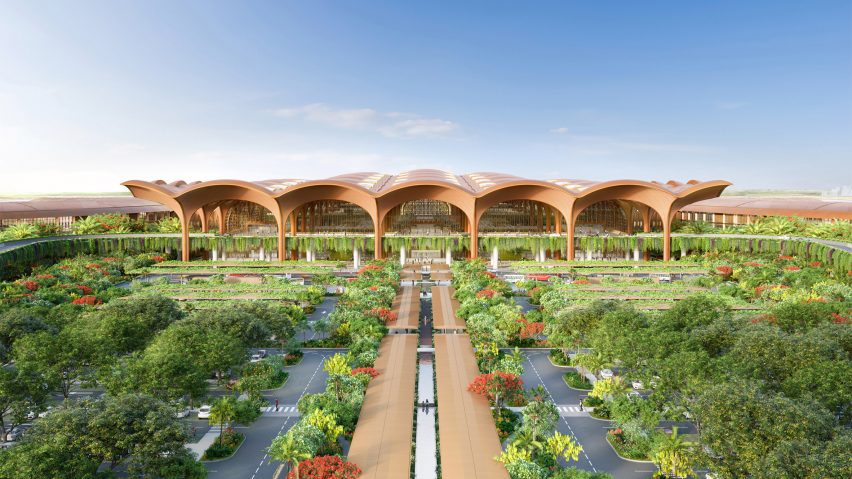
Foster + Partners reveals Techo International Airport with gridded "tree-canopy" roof
British studio Foster + Partners has unveiled its design for Techo International Airport in Phnom Penh, Cambodia, which has commenced construction 20 kilometres south of the city centre.
Drawing from the local vernacular and its tropical climate setting, the design by Foster + Partners will consist of a new airport city and a terminal building with a grid-shell roof that was designed to resemble a tree canopy.
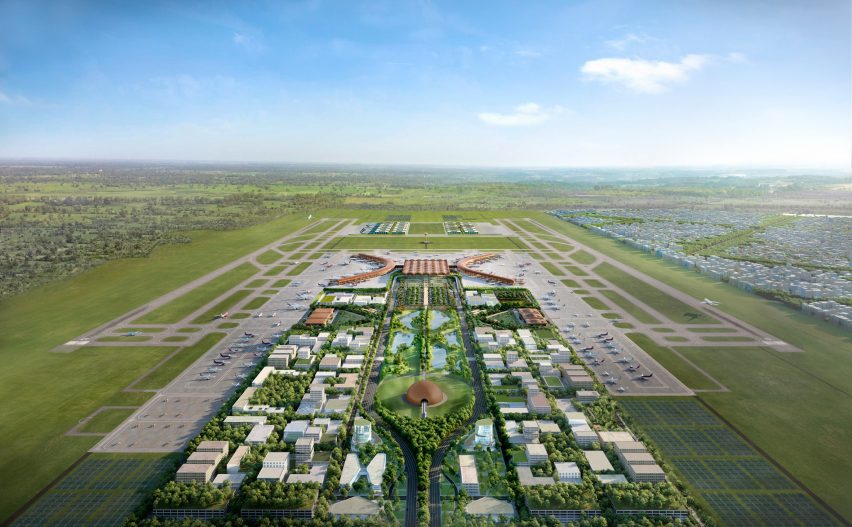
"An airport is amongst the most important of public buildings, reflecting its symbolic status as the gateway to a city and its crucial role in the globalised economy," Foster + Partners head of studio Stefan Behling said.
"The new Techo International Airport will be an important part of Phnom Penh's continued development as the nation's primary inter-regional, inter-modal transport hub."

The terminal building will comprise a central headhouse for all passenger processing and retail functions, which will be flanked on either side by two curving aerofoil-shaped wings for departures and arrivals.
A single lightweight steel roof consisting of an interconnected canopy of "trees" will stretch across the entire structure, with each tree spanning 36 metres.
The roof design will also use a filtering screen to capture natural light and illuminate the terminal interior.
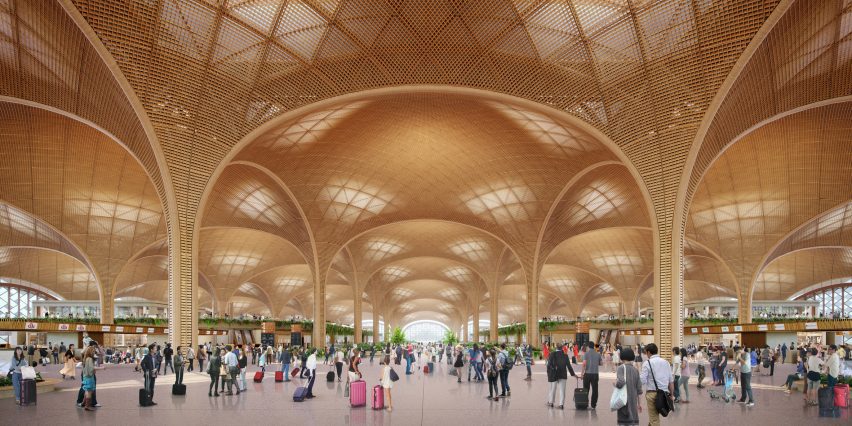
"Inspired by Cambodia's history and built heritage, the terminal's design stands as a modern embodiment of Cambodian culture," Foster + Partners senior partner Nikolai Malsch explained.
"The terminal roof is an expression of lightness and inherent modularity, serving as a symbolic gateway for every traveller's journey."
Foster + Partners will use a warm material palette for the terminal interior as a further nod to the natural, neutral-toned local architecture of the region.
The height of the raised-roof system will also be contrasted against human-scale design gestures, such as visual permeability to the airport ramps and limited level changes throughout the masterplan.
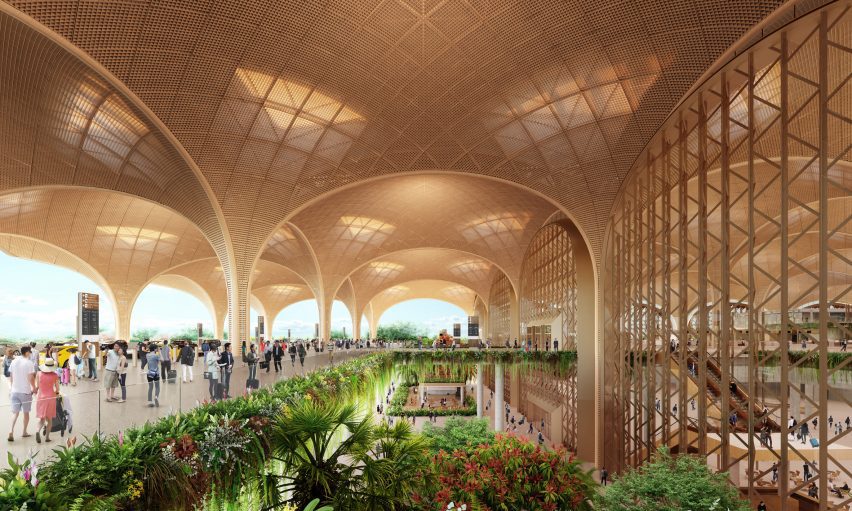
Set to run primarily from onsite-generated photovoltaic energy, the design also integrates dense landscaping that runs the length of its central spine and leads into the terminal.
The studio will utilise extensive plantings and green edges within the airport buildings to soften the interiors against the monumental grid shell roof.
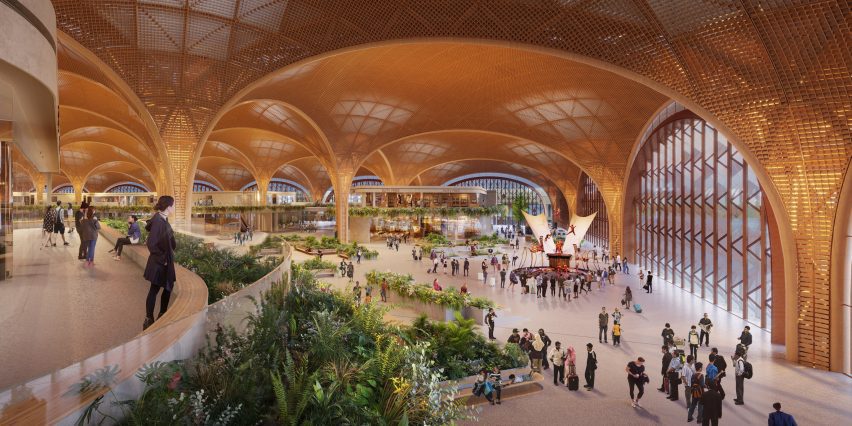
The airport is currently under construction, with the masterplan set to be completed in a series of phases.
The first phase will accommodate 13 million passengers per year through the under-construction terminal headhouse and aerofoil piers, while future plans include the addition of a further aerofoil wing to increase the airport's capacity to 30 million passengers per year.
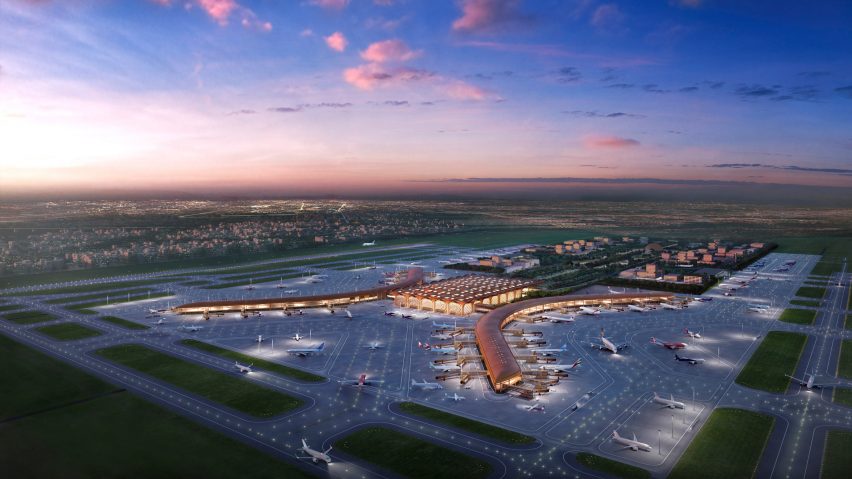
Foster + Partners has also recently revealed designs for a mixed-use development in Miami that references the local vernacular and plans for a new urban centre in Hangzhou, China.
The studio is currently working across a number of airport projects within Saudi Arabia, including its design for the six-runway King Salman International Airport in Riyadh and a new terminal at Abha Airport defined by a series of interconnected stone buildings.
The images are courtesy of Foster + Partners.